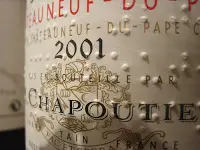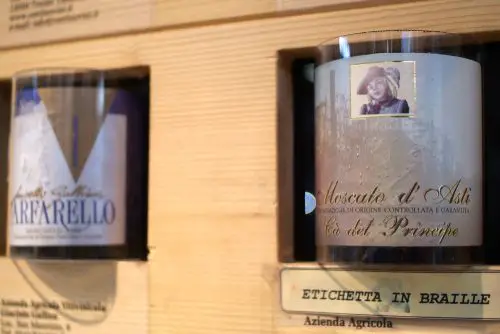Wine labelling is somewhat of a nightmare when you consider what they should and should not put on the label but one area where they really fal l down is that they do not cater for the blind.
l down is that they do not cater for the blind.
It is very rare to find a wine label in Braille. In 1996 Michel Chapoutier pioneered the labelling of wine labels in Braille and since then only a handful of other producers have done so.
Michel Chapoutier is the renowned wine maker from the Rhone valley in south eastern France and he invented the first Braille label for wine bottles on his ageing printing press.
Chapoutier took over a vineyard in Hermitage which had been formerly owned by Monier de La Sizeranne who was President of the Association of the Blind in France, and was blind himself.
Monier was responsible for creating the first abbreviated version of Braille. When the vineyards holding passed to Michel Chapoutier family, he named the wine Sizeranne, and in tribute to Monier, he put Braille on all of the labels all of his wines to reach out to and include all people with sight-impairments who were lovers of good wines.
 Chapoutier did some research and found that it was very easy to use old printing machines that are no longer used for normal print for the Braille instead. The cost is very low, about six centimes (less than 1p) per label.
Chapoutier did some research and found that it was very easy to use old printing machines that are no longer used for normal print for the Braille instead. The cost is very low, about six centimes (less than 1p) per label.
He decided to use his 40-year-old printing machine to make every one of the 2.5 million bottles of wine he produces each year (including appellations like Hermitage, Crozes-Hermitage, Condrieu, St.-Joseph, Cote Rotie and Chateauneuf-du-Pape.)
The technique is the same as printing visible labels: an iron Braille negative is pressed onto the back of the paper label to make the Braille bumps. Little did he know that his invention would later win an award from campaigners for sight-impaired people in the UK.
Reading the Braille, customers can learn the type and name of the wine, the vintage date, the name of the winery, the town where the wine was made and the colour of the wine, a vital piece of information, since some of the appellations come in both red and white.
Since then a ha ndful of other wine producers have taken the initiative to produce wine labels in Braille. Lazarus Wine is made in Spain by people who are blind and uses the Braille alphabet.
ndful of other wine producers have taken the initiative to produce wine labels in Braille. Lazarus Wine is made in Spain by people who are blind and uses the Braille alphabet.
The Confrerie des Chevaliers du Tastevin now provide Braille labels. 2004 saw the arrival of Braille labels on bottles from the South African organic producer Bon Cap.
In 2005 an Irish label company, Designerwine stepped up. As did the Czech wine  producer Galant in 2006. And in a new development, Pyrotech has begun producing wine bottles in Braille.
producer Galant in 2006. And in a new development, Pyrotech has begun producing wine bottles in Braille.
Fox Creek Wines in Australia has released Braille and large print wine bottle labels, with assistance from the Royal Society for the Blind. Azienda Ciavolich in Abruzzo, South Central Italy also make their wine labels in Braille.
Meanwhile Chapoutier has his own suggestion. “With the widespread use of bar-codes in shops, it could be easy for such codes to hold information for blind people. They could use special pens to decode the information and then hear about the product through a speaker.”
Lets hope that labelling in Braille starts to make some headway and that more wine producers follow Chapoutier’s example.

